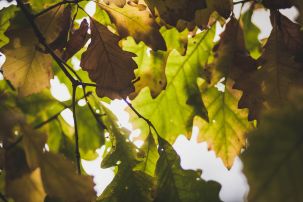Lesson summary
In this activity students will explore biodiversity and habitat through both class discussion and field studies. This activity begins with a class discussion around the definitions of biodiversity and habitat. Students then take a walk around the school, identifying and photographing habitats at your school. Students also identify and count features of biodiversity at these sites (plant and animal). Finally students identify the biodiversity hot spots at your school and make recommendations for improving biodiversity at your school.
Learning intentions:
Students will...
- understand the terms 'biodiversity' and 'habitat'.
- recognise that there are a range of habitats at their school.
- understand how to identify biodiversity hot spots at their school.
Lesson guides and printables
Curriculum links
Select your curriculum from the options below.
Lesson details
Curriculum mapping
Australian curriculum content descriptions:
Science Year 1:
- Living things live in different places where their needs are met (ACSSU211)
- Science involves asking questions about, and describing changes in, objects and events (ACSHE021)
- People use science in their daily lives, including when caring for their environment and living things (ACSHE022)
Mathematics Year 1:
- Recognise, model, read, write and order numbers to at least 100. Locate these numbers on a number line (ACMNA013)
Geography Year 1:
- Collect data and information from observations and identify information and data from sources provided (ACHASSI019)
- Present narratives, information and findings in oral, graphic and written forms using simple terms to denote the passing of time and to describe direction and location (ACHASSI027)
Science Year 2:
- Living things grow, change and have offspring similar to themselves (ACSSU030)
- People use science in their daily lives, including when caring for their environment and living things (ACSHE035)
Geography Year 2:
- Collect data and information from observations and identify information and data from sources provided (ACHASSI035)
- Present narratives, information and findings in oral, graphic and written forms using simple terms to denote the passing of time and to describe direction and location (ACHASSI043)
Science Year 3:
- Living things can be grouped on the basis of observable features and can be distinguished from non-living things (ACSSU044)
Geography Year 3:
- Locate and collect information and data from different sources, including observations (ACHASSI053)
- Present ideas, findings and conclusions in texts and modes that incorporate digital and non-digital representations and discipline-specific terms (ACHASSI061)
Science Year 4:
- Living things, including plants and animals, depend on each other and the environment to survive (ACSSU073)
- Science knowledge helps people to understand the effect of their actions (ACSHE062)
Geography Year 4:
- Locate and collect information and data from different sources, including observations (ACHASSI074)
- Present ideas, findings and conclusions in texts and modes that incorporate digital and non-digital representations and discipline-specific terms (ACHASSI082)
Cross curriculum priorities:
Sustainability – OI.1 – The biosphere is a dynamic system providing conditions that sustain life on Earth. O1.2 -All life forms, including human life, are connected through ecosystems on which they depend for their wellbeing and survival.
General capabilities: Critical and creative thinking
Syllabus Outcomes: GE1-3, GE2-4, ST1-4WS, ST1-11LW, ST1-9ES, ST2-11LW, ST1-10LW, ST2-10LW, MA1‑1WM, MA1‑2WM, MA1‑3WM, MA1‑4NA.
Connecting lessons: Native animal identification.
Resources required
- Digital cameras
- Students worksheets
- Internet access
- Printed map of school grounds (use Google Maps if no hard copy available)
- Drawing/writing materials
Additional info
NOTE: Although this activity has been created in support of the ResourceSmart AuSSI Vic program you will not produce a specific habitat score, which you need to meet the data goals of the program.
This activity has been created to give younger students – for whom the official biodiversity audit would be too complex – an opportunity to participate in the biodiversity component of the ResourceSmart AuSSI Vic program. To gain accreditation your school will still need to complete the more complex biodiversity audit.


Welcome back!
Don't have an account yet?
Log in with:
Create your free Cool.org account.
Many of our resources are free, with an option to upgrade to Cool+ for premium content.
Already have an account?
Sign up with:
By signing up you accept Cool.org's Terms and Conditions(Opens in new tab) and Privacy Policy(Opens in new tab).